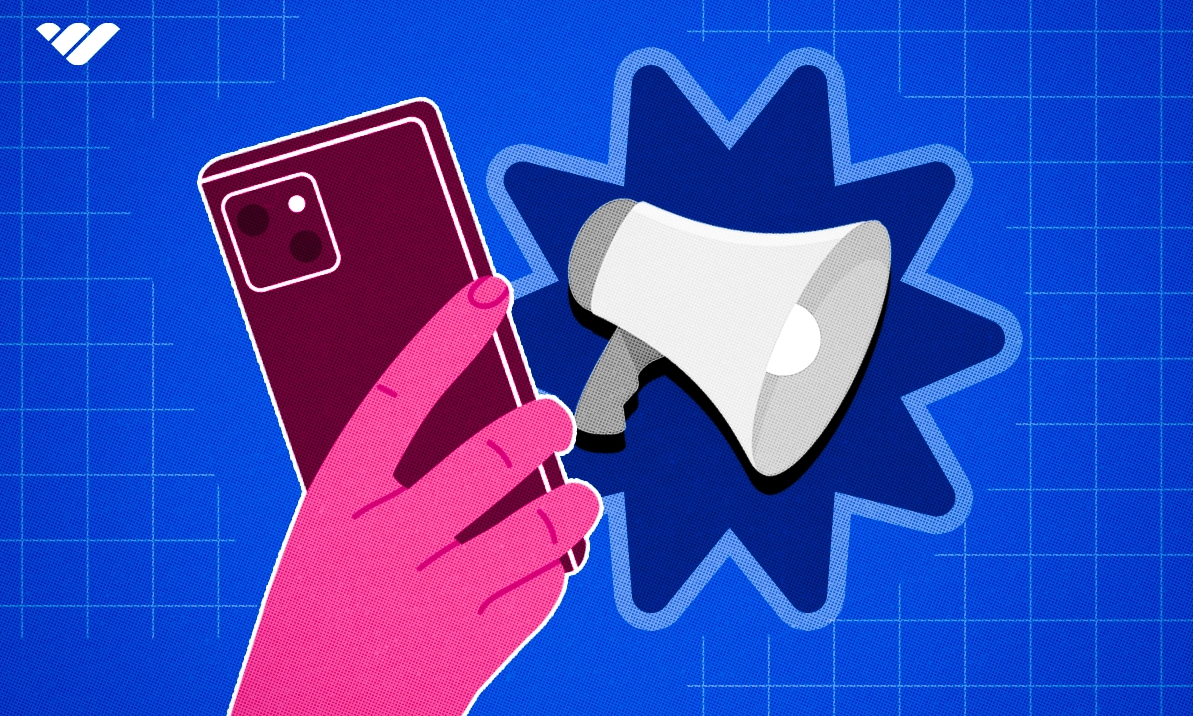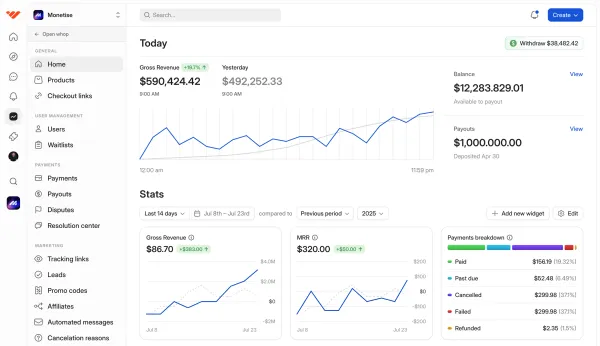Digital marketing is any marketing strategy that focuses on internet and other digital channels. From social media to SEO, learn how to master modern strategies, connect with customers, and drive growth with expert insights and tips.
Key takeaways
- Digital marketing encompasses any marketing strategy that takes place on electronic devices.
- In the US, 53% of purchases start with online research using search engines.
- Digital ads can boost brand awareness by as much as 80%.
- Click-through rates and conversion rates are key metrics for measuring digital marketing success.
- User-generated content on social media significantly amplifies brand reach and engagement.
Digital marketing is marketing strategies that happen on devices like computers, phones, and even TVs - from email marketing campaigns to social media posts.
In fact, in the United States, 53% of purchases start with online research using a search engine? Those purchases can then be traced back to one thing: Successful digital marketing strategies.
In this article, I'll walk you through everything you need to know about digital marketing, from how it works to how to make the most of it.
What is digital marketing?
Any marketing strategy that takes place on an electronic device is digital marketing. It could be emails and texts on smartphones, native ads on social media platforms, a product page with good keyword integration, or even a commercial on TV.
While a lot of digital marketing happens over the Internet, this isn't a requirement. That's why examples like commercials or banners in offline apps also count.
Some of the main benefits of modern digital marketing are that you can target people at specific times and direct them exactly where they need to go with as little as one click.
Large companies often combine digital marketing with more traditional marketing strategies, but for smaller online businesses, it's quite common for all of their marketing tactics to be digital.
The bottom line of digital marketing, as well as all marketing efforts in general, is using various strategies to get more pairs of eyes on your products and services. It's a massive driving force in sales, growth, and brand awareness.
Keen to become a digital marketer? Read our guide on digital marketing salaries and more!
How does digital marketing work?
Broadly speaking, there are two main goals of digital marketing. Let's go over both.
The first goal is to go all-in on accessibility and make everything related to your products, from websites to apps to product descriptions, run flawlessly, read well, and accurately describe what the customer is dealing with.
This is why it's important to partner with trustworthy platforms, such as Whop, to sell your digital products and services. Then, your optimization efforts come down to utilizing search engine optimization (SEO) to make them easier to find.
The second goal is to maximize visibility by bringing your content, advertisements, and products to the attention of as many people as possible.
To put it simply, digital marketing comes down to showing people products they're interested in and making it easy for them to go ahead and buy that product or service.
Digital ads can boost brand awareness by as much as 80%, and in the United States, for example, 58% of consumers say they've made a purchase after getting an ad on social media. (I know I'm guilty of doing this all too often.)
If you're wondering how accurate these numbers are—well, that's another benefit of digital marketing! It's exceptionally easy to measure. Because everything is digital and many types of data related to marketing strategies can be tracked, it's possible to find out exactly how well things are going.
Here are some of the main key performance indicators (KPIs) digital marketers use to measure success.
Click-through rates
The magical thing about online ads is that you can see how many people click on them but also how many people view them.
With both of these numbers available, you can calculate the click-through rate—how many people clicked on the ad compared to how many people saw it.
Conversion rates
To become a "conversion," a person has to not only click on an ad but also complete a desired action of some kind. This is usually related to making a purchase or signing up for something.
It's still presented as a percentage of all the people who viewed the ad, so conversion rates are always much lower than click-through rates.
Social media traffic
This is a measurement of everything that happens on social media, from visits to views, likes, follows, and shares. By using different links, tracking tools can even keep track of where visitors have come from—from a website link or a search engine, for example.
Companies tend to track the performance of individual social media posts as well to determine what they should do more of and what they should do less of.
Website traffic
Website traffic is pretty much the same thing but for websites. You can see how people found your site, how long they stay, what pages they visit, whether they put something in their shopping cart, or whether they make a purchase.
11 most popular types of digital marketing
There are many different types of digital marketing and ways to approach each strategy. Everyone tries to put their own spin on tried-and-tested tactics—so here are some of the most popular types of marketing that you can put your own spin on too.
1. Social media marketing
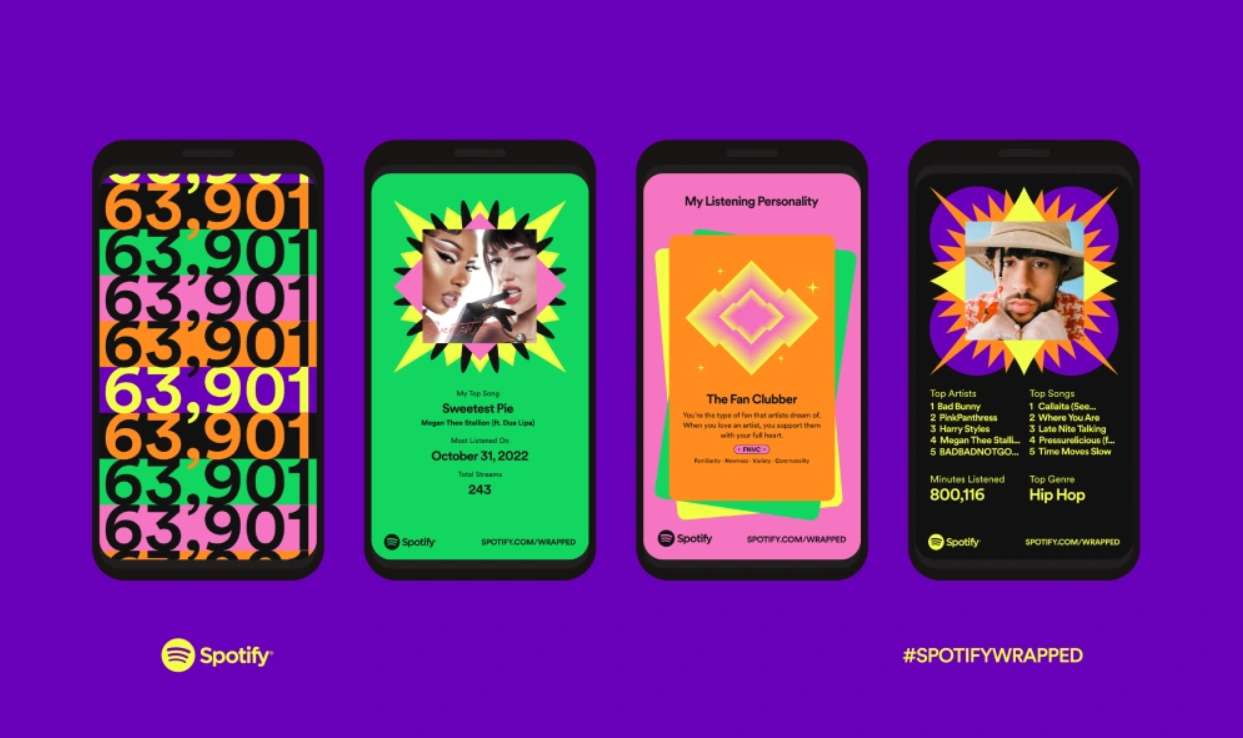
As a business, you can make a company profile on platforms like Instagram and TikTok and post content related to products—but when it comes to marketing on social media, this is really only the beginning.
The key to success is getting people involved so it's not just your official channel posting about your products, but other users as well. This is called user-generated content (UGC), and Spotify's Wrapped feature is one of the best examples you can find.
The company collects data on what its users are listening to for all sorts of purposes, but by presenting the numbers in an exciting way and adding one-click options to upload to social media, Spotify created an instant marketing hit.
People have fun sharing their favorite songs and the insane number of hours they've spent streaming music, while Spotify gets a ton of attention and engagement for a few days every new year.

Apple does something similar with its #ShotOniPhone challenge, effectively holding a worldwide photography competition every year across multiple social media platforms.
For smaller brands and ecommerce stores, it's common to offer discounts and rewards for people who post images and reviews of their purchases online and tag the brand.
It's a good way to encourage engagement even when you don't have an Apple or Spotify-level reputation to rely on!
2. Working with influencers
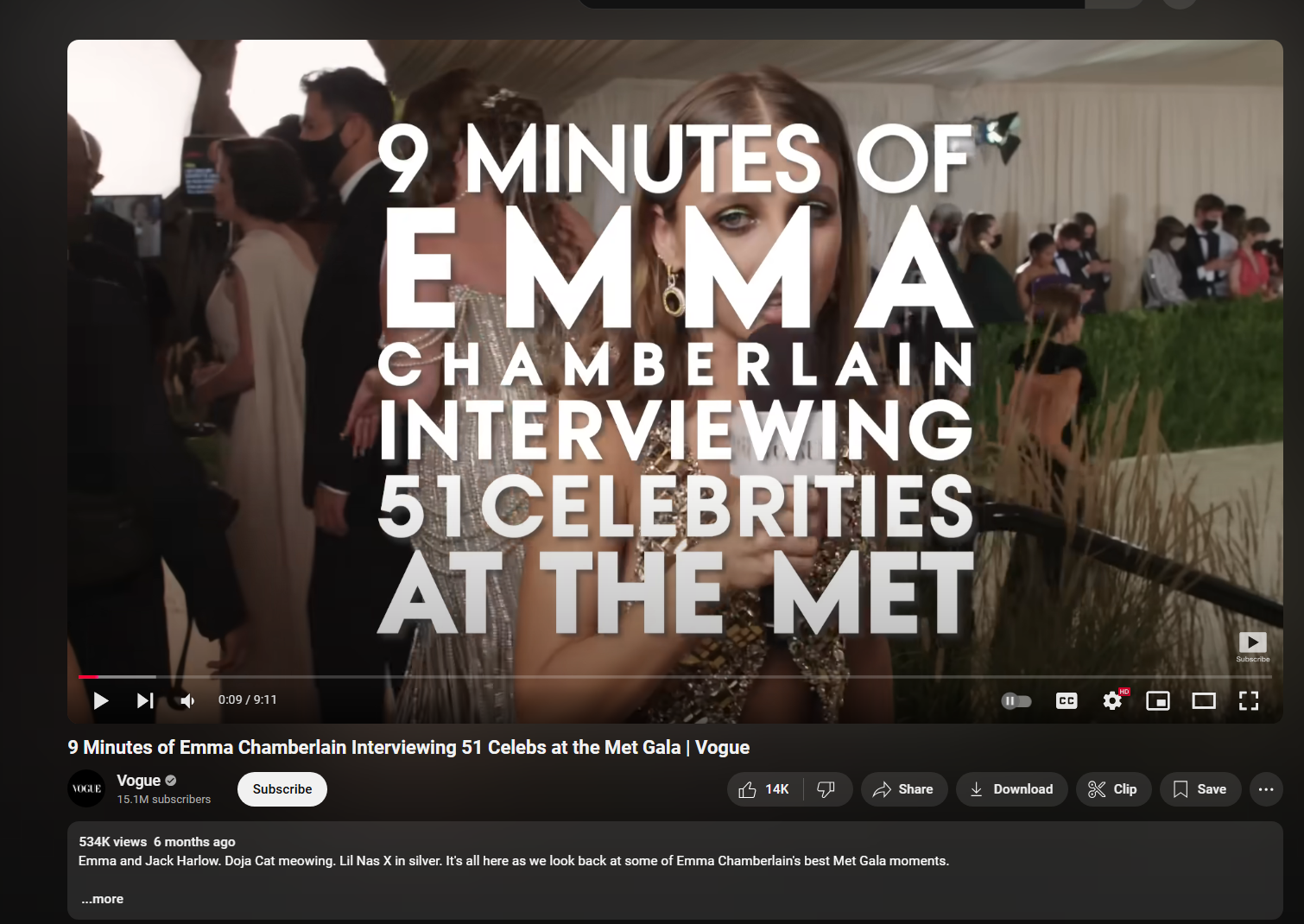
While people still enjoy following celebrities, influencers tend to have more loyal and active audiences these days because they create a much more intimate and interactive experience for their fans.
Because of this, influencer marketing can be incredibly effective, and that's true for both smaller brands and world-famous events. Take the Met Gala, for example. It's usually all names like Kim Kardashian, Ryan Reynolds, Ariana Grande, and other A-list celebrities who make the guest list.
But in 2021, the event decided it wanted to expand its audience and visibility by inviting influencers like Emma Chamberlain, Maddison Beer, NikkieTutorials, and Addison Rae. The event instantly became much more diverse and more people watched it—in other words, it was a total success. (Fun fact: Emma also worked with Vogue to interview various celebs at the event.)
Obviously, most of us can't host our own Met Gala (although that'd be really cool). But this just shows how teaming up with influencers can help all sorts of brands reach a whole new audience.
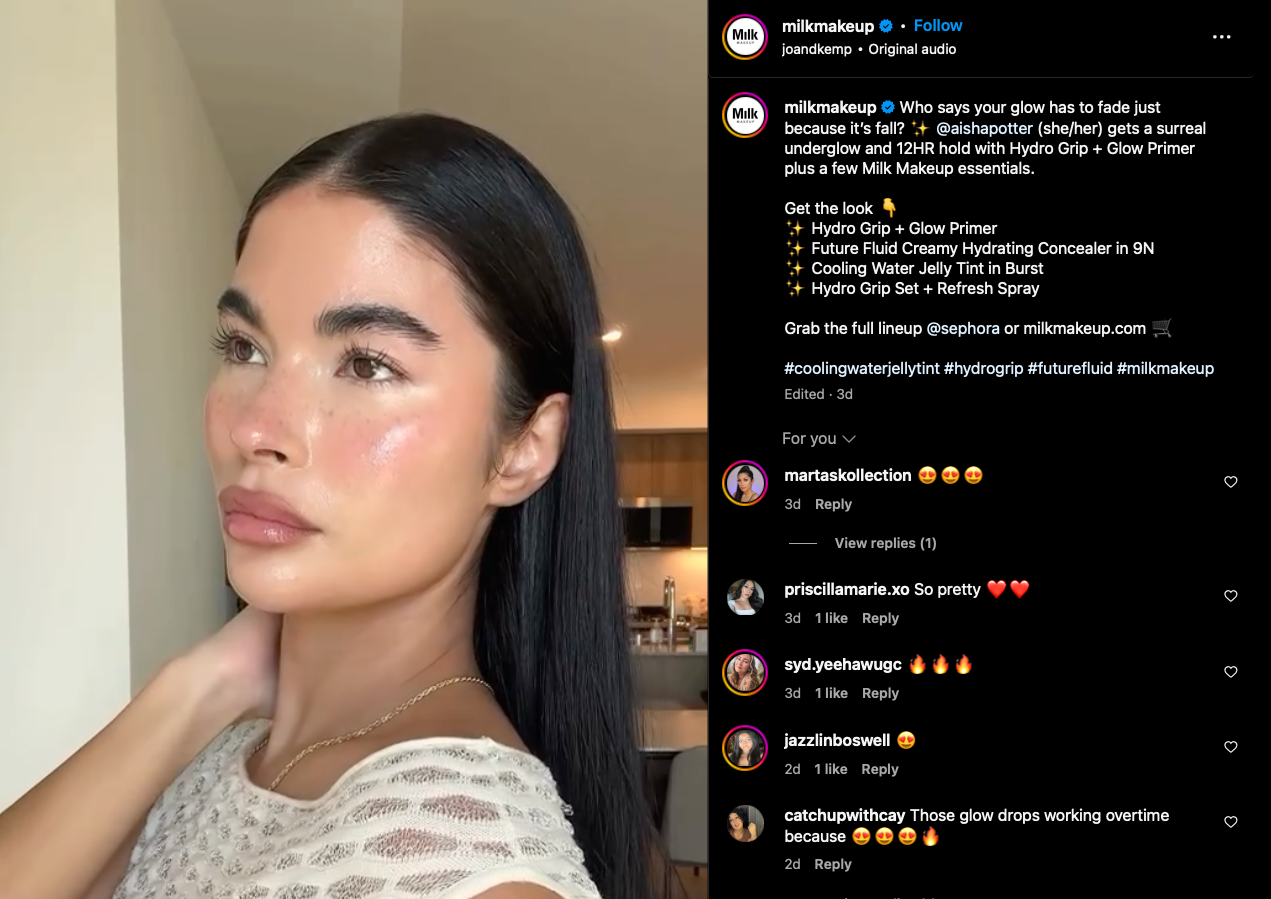
Another way to collaborate with influencers is to send them PR boxes so they make content about your products. If you're selling digital products, this is even easier, as there are no shipping costs involved.
You can work with the influencers directly and feature the content on your own account, or keep things organic and let the influencer choose to review or feature your products in their videos.
Let's take Milk Makeup as an example. The brand features influencer makeup looks on its account frequently, expanding its visibility across many different audiences.
Thanks to platforms like Instagram's Creator Marketplace, it's easy for brands with all kinds of budgets to find influencers to work with, making this a widely accessible marketing strategy.
When you get attention on social media, you can funnel those people to the site or platform where you sell your products.
Whop is a great platform for this if you're selling digital products like extra content, online courses, ebooks, and downloadables. You can even offer influencers affiliate links to get them to promote your whop, which is mutually beneficial all around.
3. Email marketing
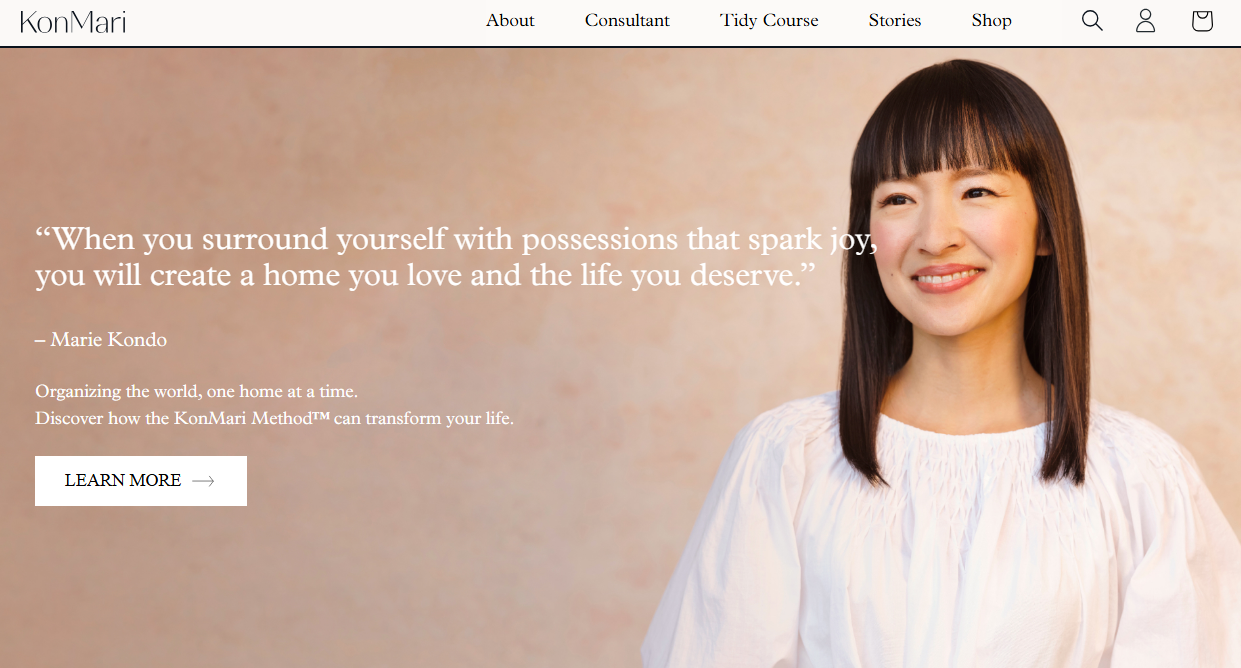
Email marketing comes in many different forms but one of the best known strategies is newsletters.
Email newsletters have a complicated reputation. Some people become loaded with low-effort newsletters that they consider to be spam, while others subscribe to paid newsletters that they consider to be very valuable.
A common strategy for brands is to offer a first-time buyer discount for people when they sign up for a newsletter. You'll usually see this as a popup you can enter your email into when you visit a website.
If you sign up, you'll likely receive your discount code and a welcome newsletter. Marie Kondo's welcome newsletter is a great example—it's minimalist, clean, and very clearly suits her personal branding.
It also tells people what to expect from the newsletter, giving examples of the kinds of valuable content you'll get when you click on future editions. When you do it right like this, newsletters can be a great way to stay in touch with your customers and share new products.
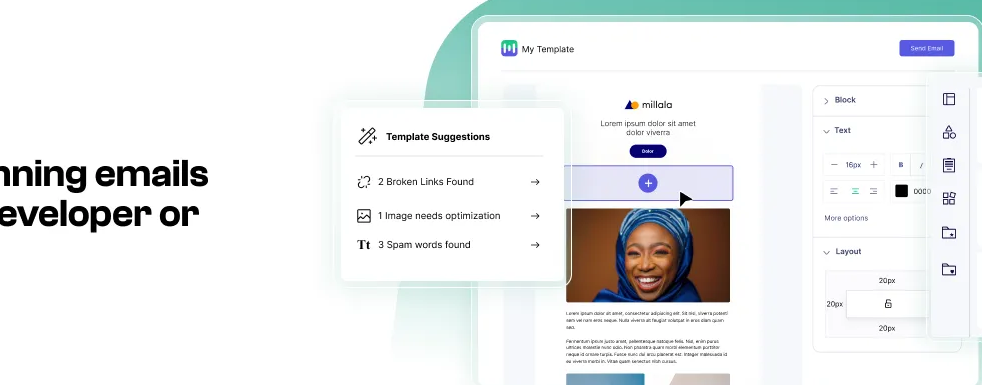
With modern email marketing tools like Mailmodo (which you can easily integrate with your own whop), you can also personalize your newsletters for each recipient.
This changes newsletter content based on where people are, what they've bought in the past, and how they interact with your brand. It's also an essential, and fundamental, strategy in digital marketing.
4. Search engine optimization (SEO) marketing
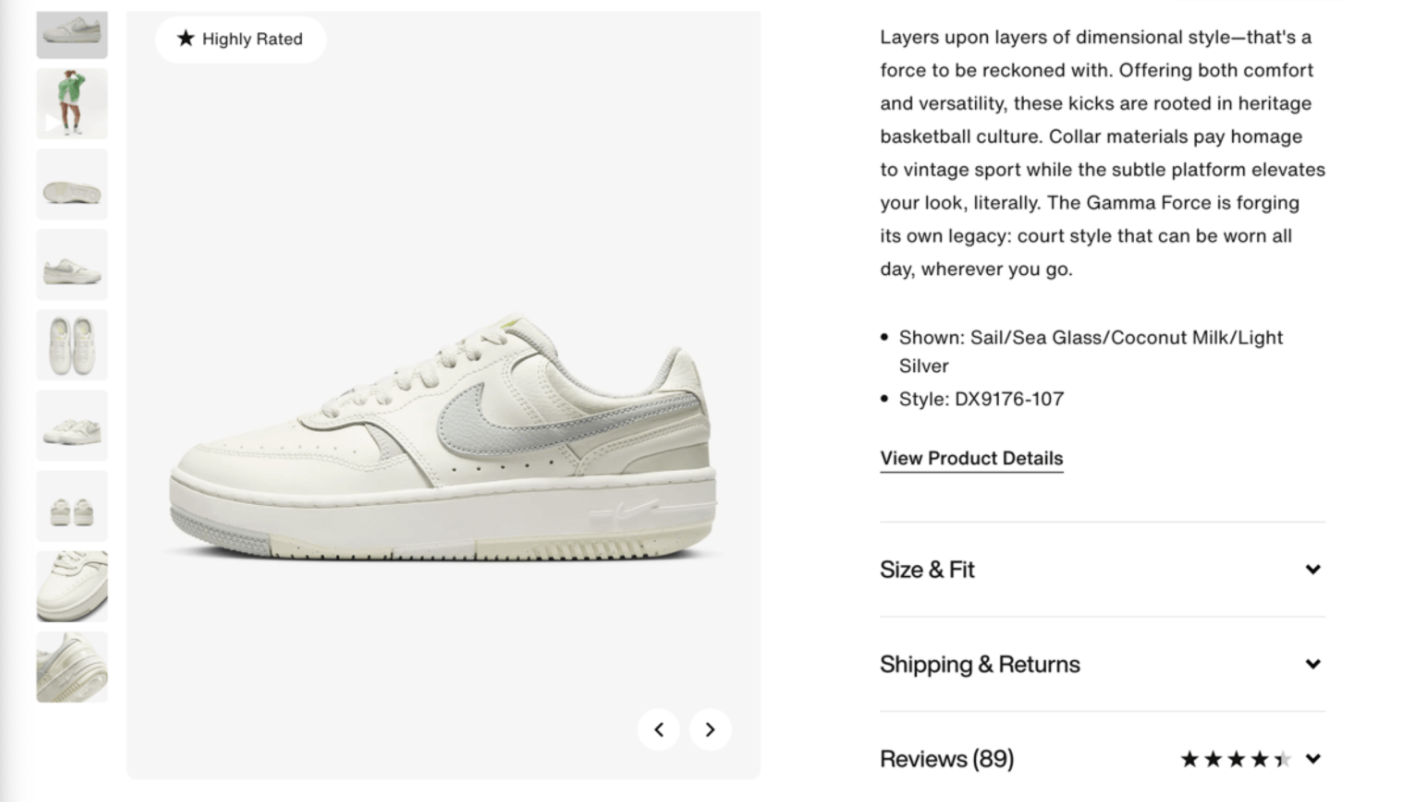
As the name suggests, SEO is all about making your website as clear and trustworthy to search engines as possible.
By following certain best practices, you can make sure Google and other search engines understand what your site or product is about and convince them to push your site to the top of the search results page.
SEO is a whole topic on its own and includes many different strategies such as:
- Keywords and phrases
- Schema markup
- Images and alt text
- Backlinks
- Page navigation
- URLs
- Expertise, Experience, Authority, and Trust (EEAT)
- FAQs
Ecommerce sites like Nike have great keyword integration on their product pages to make sure their products show up in the results for many different search prompts.
Companies like Starbucks, on the other hand, keep visitors happy with amazing product images while keeping Google satisfied with their fast loading times and well-written alt text.
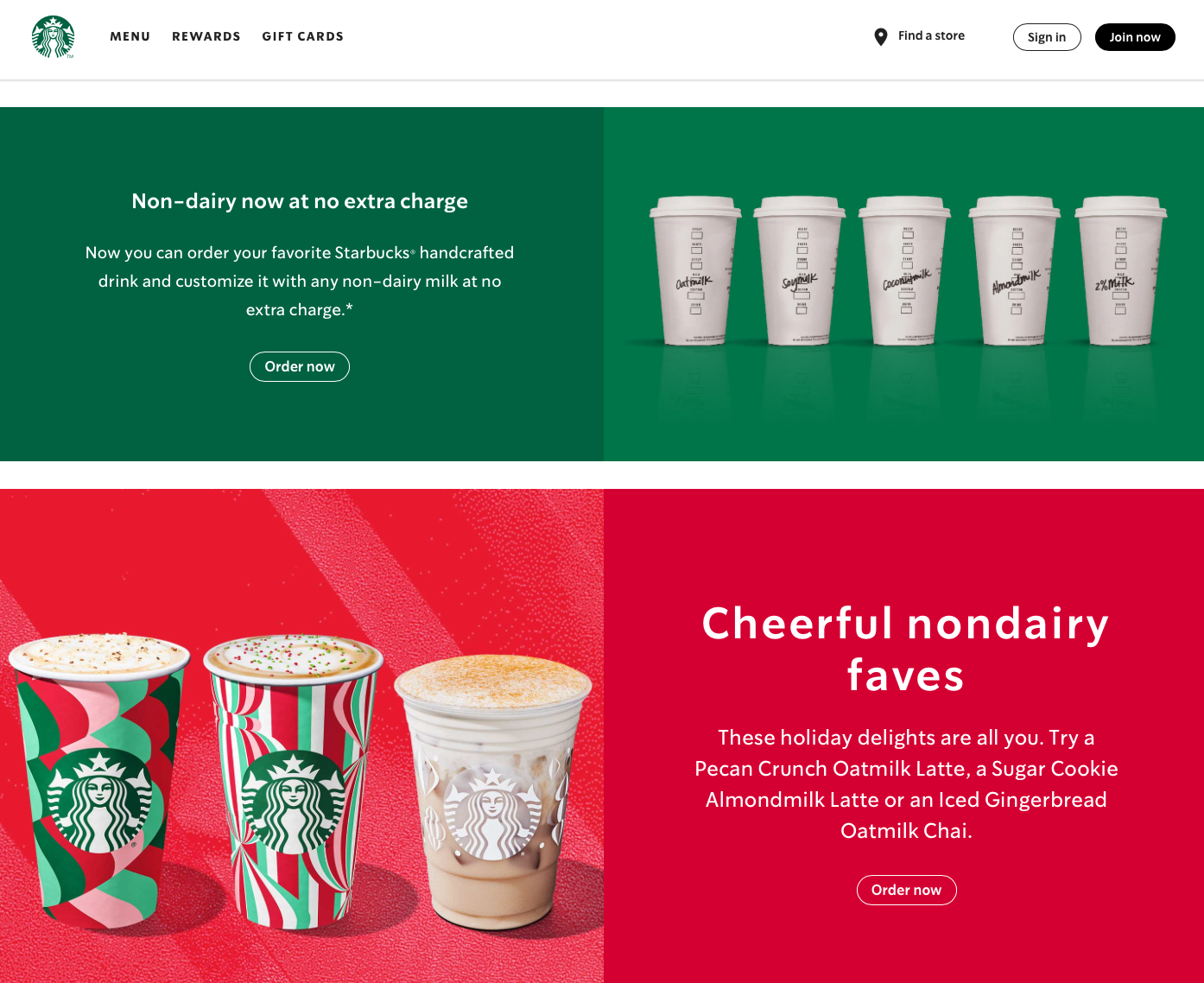
There are many different levels of SEO proficiency, and pretty much all online businesses need at least a basic understanding of best practices. Larger companies tend to have a dedicated SEO expert, and successful websites often use SEO tools like Semrush to audit their sites and pinpoint areas for improvement.
Solopreneurs, small business owners, and freelancers still benefit from SEO. For example, if you're offering ebooks or courses via Whop, optimizing the product names and descriptions can go a long way toward making sure that your stuff is always at the top of every search.
5. Website marketing
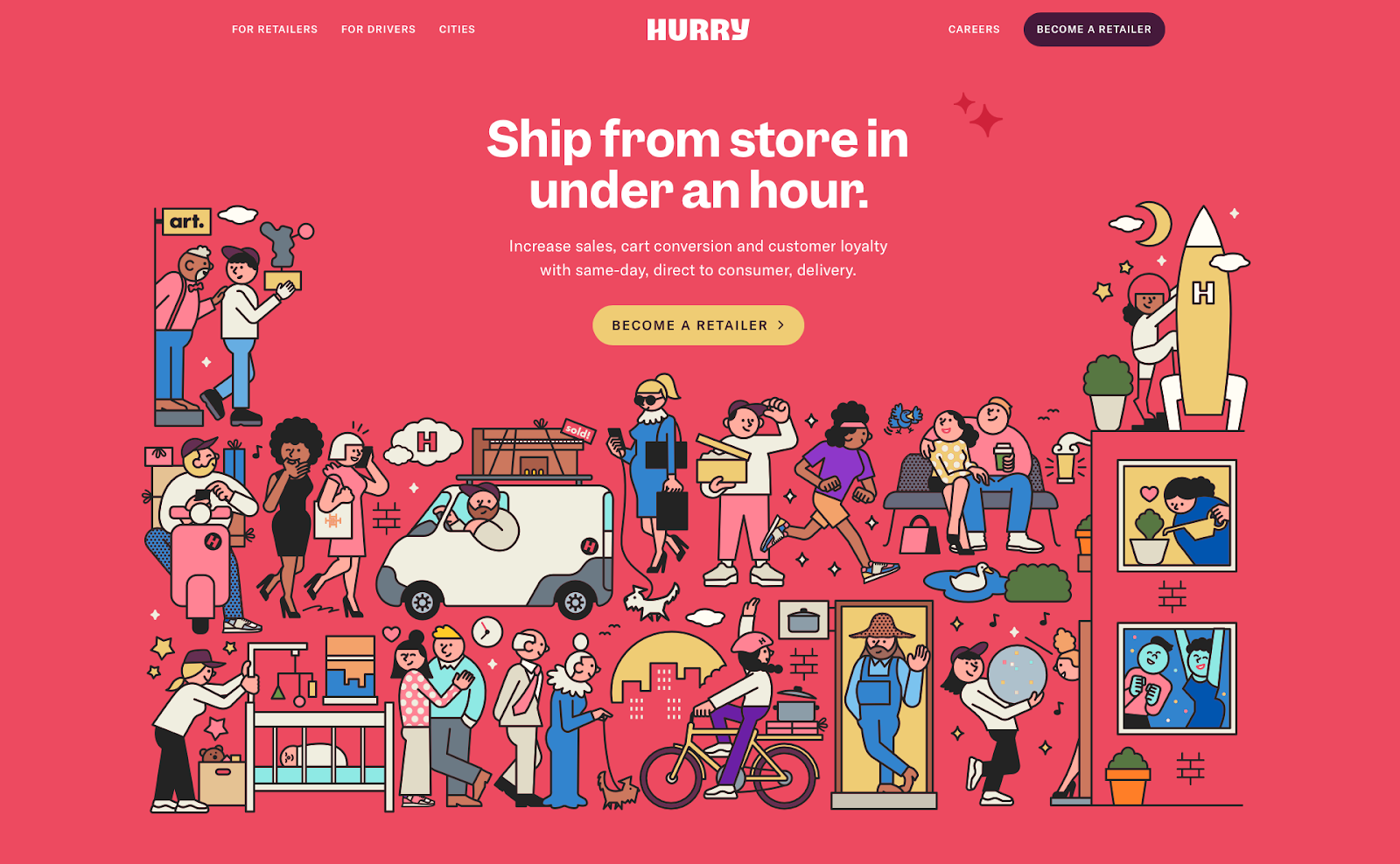
Even in the age of social media, websites tend to be the centerpiece of a brand or company's marketing strategy.
No matter how you find out about the brand, if you want more information, you'll search for its website … the quality of the site you find will play a big part in shaping your opinion of the brand.
If a company wants to make a good impression, it needs to invest in a site that runs smoothly, looks good, is structured well, and includes all the information people might look for.
Current trends usually include a tagline and a full-page illustration for the landing page, like the example from Hurry above. Then, instead of navigating to other pages right away, the most important information is available just by scrolling down the page.
Headers are used to navigate to other main sections of the website and footers are used to present more detailed navigation, links to socials, newsletter sign ups, and more.
Making a whole website from scratch is tough, so you're often better off hosting your hustle on a platform like Whop.
You won't have as many opportunities for customization as you would with your own website, but in return, your store will run smoothly and you'll have access to a secure payment system.
You'll also get the chance to be spotted by people browsing Whop, which is huge when you're starting out and aren't getting any organic traffic from your SEO efforts.
Whop is also completely free to set up, and the same cannot be said about websites. You'll build your own hub for all things you, no matter the type of products or services you're offering.
To maximize your success, you can create custom images for your Whop and follow SEO best practices for your product pages.
6. PPC (pay-per-click) advertising
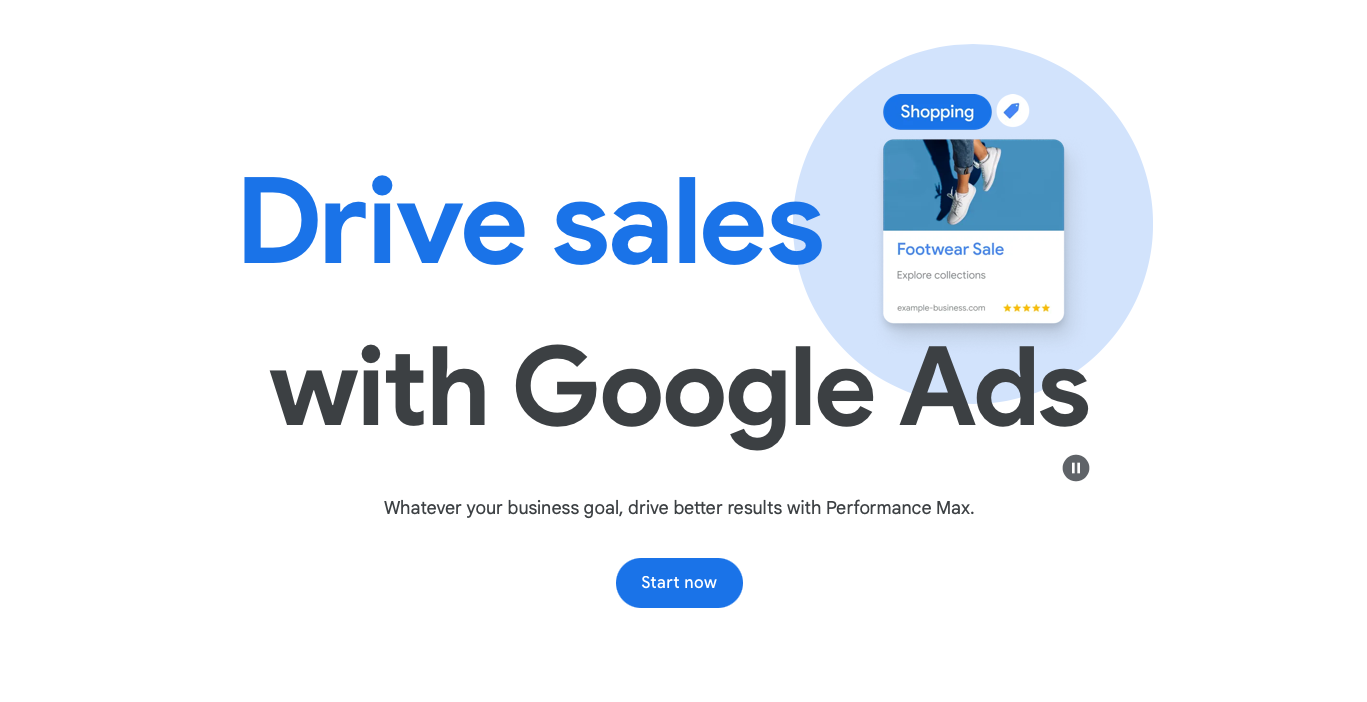
Pay-per-click (PPC) advertising is the perfect way to get into paid advertising as a small business owner. Instead of paying for an ad campaign upfront, you only need to pay when someone actually clicks on your ad.
This eliminates the risk of investing in a campaign and getting nothing out of it. Various places offer PPC advertising, such as Google, Instagram, Meta, and more.
On Google, ads will appear at the top of the search results with the word "Ad" or "Sponsored" next to it.
On social media, ads will pop up between posts and videos, often taking the same form as the content type.
Another benefit to PPC advertising is that you can work with multiple agencies since you're only paying when your ads are successful. You only need to do this if it makes sense, however. If your audience is primarily on TikTok and not on Facebook, it's clear where you should focus your ads.
It helps to use one of the best PPC platforms when you're getting started.
7. Content marketing
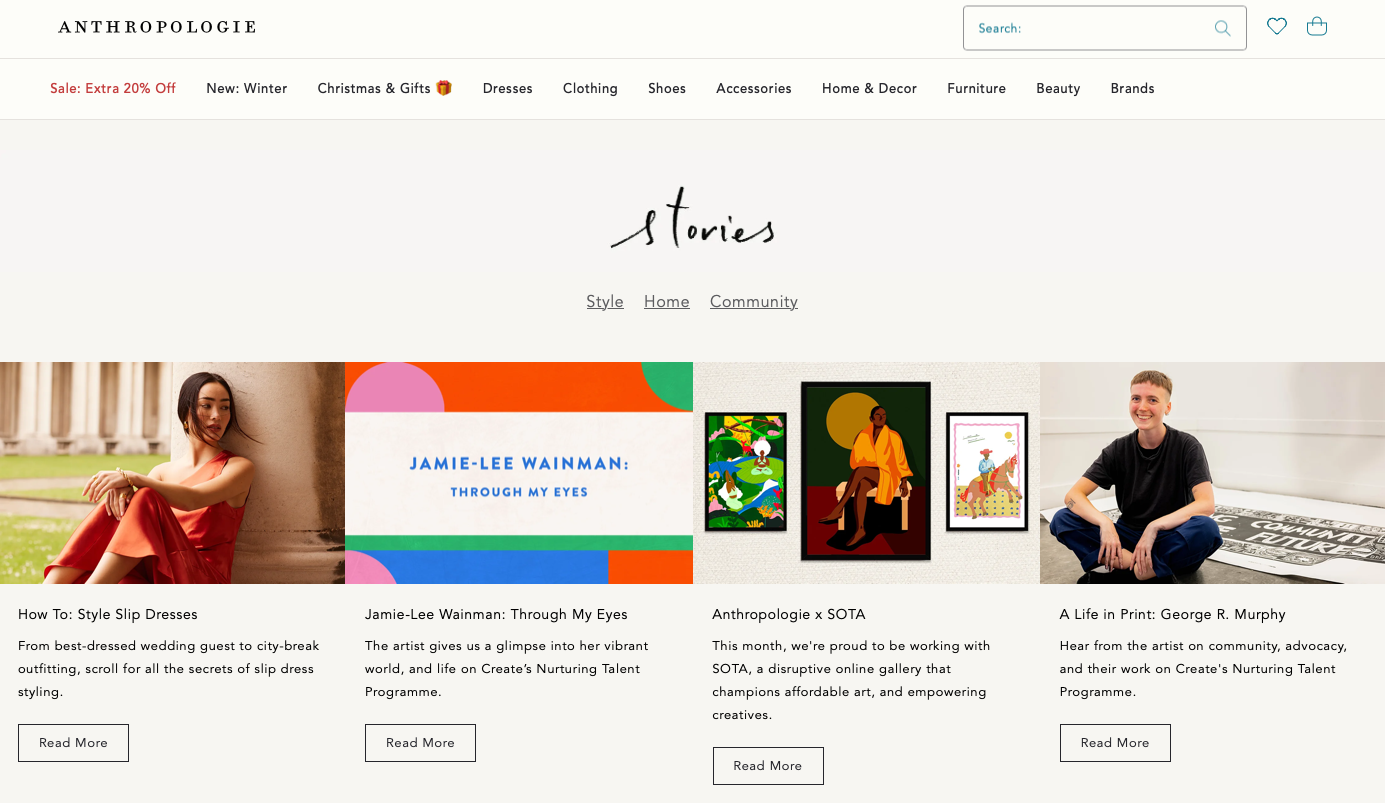
I mentioned earlier that most businesses create their own accounts on social media platforms and post about their products. Fun fact: Although it's happening on social media, this is actually a type of content marketing.
Content marketing basically refers to any strategies that involve creating and publishing content for your audience to consume. Other places it happens are on websites, blogs, podcasts, streaming platforms, and more.
You're an expert in whatever area you specialize in. A clothing store is an expert in fashion, and a seasoned crypto trader is an expert at cryptocurrencies—which means you can create valuable content about these topics.
Aside from quality, the other important thing when it comes to content marketing is consistency. Anthropologie's fashion and lifestyle blog, for example, has hundreds of posts on various topics. This allows people to check the site regularly and always get some value out of doing it.
Whether it's blog posts, social media posts, or YouTube videos, the key to building up an audience and keeping them engaged is posting regularly.
8. Affiliate marketing
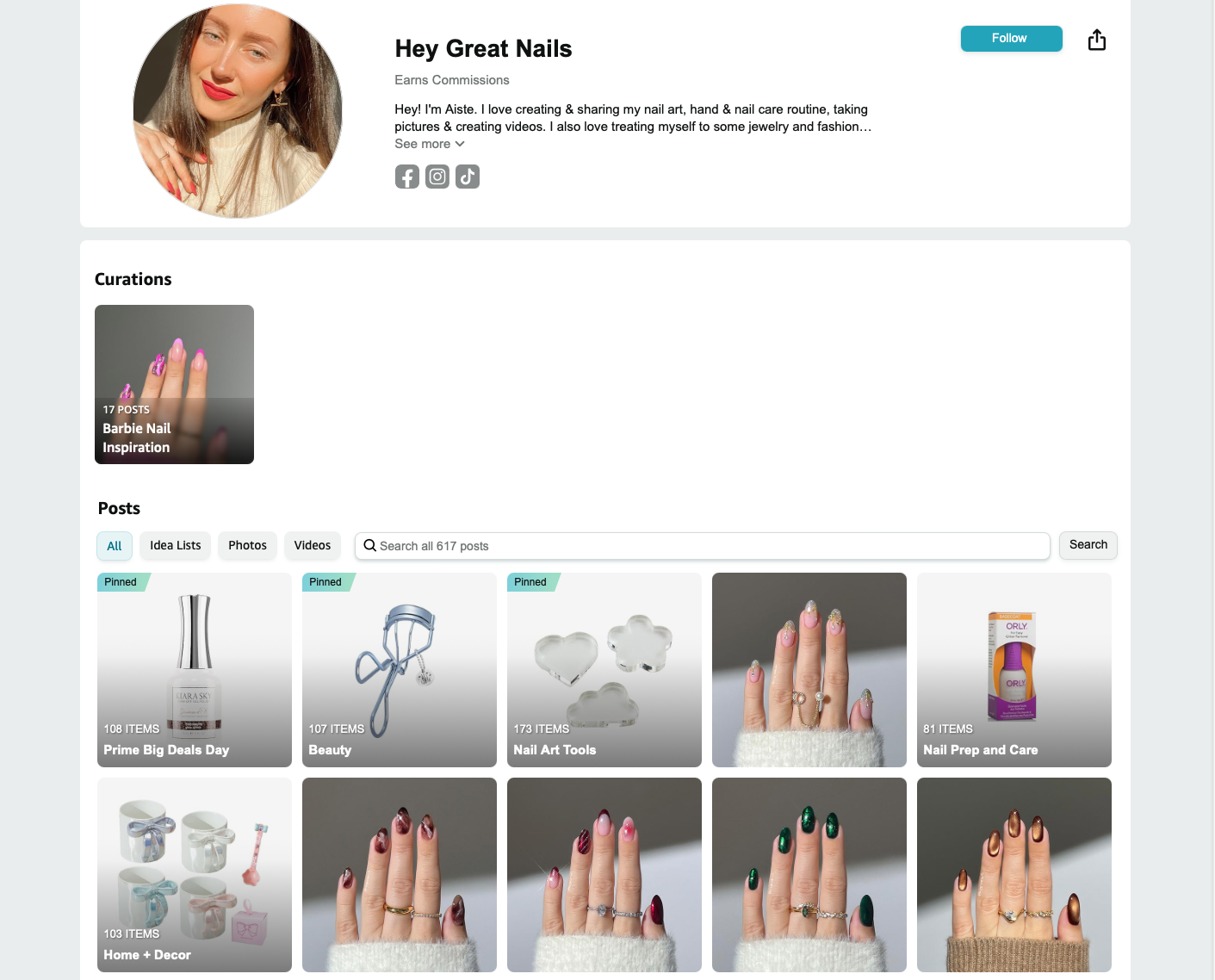
Affiliate marketing is another way of working with influencers but in a more official sense. You team up with specific influencers and draw up a contract for them to promote your products.
When you send out unsolicited PR boxes, you're inviting influencers to review your products but you have no say in whether they do it or what they say. With affiliate marketing, on the other hand, you're hiring influencers to help you promote products and usually, you'll sign off on all content they make before it's published.
This is an important part of a successful digital product strategy.
There's also a less involved version where you vet an influencer first and then share an affiliate link with them. In this case, you probably won't check the content they make, which is why it's important to check their content style and posting history beforehand.
The links may pop up often, as it's beneficial both to you and the influencers to keep getting sales!
Amazon affiliates are one of the most common you'll see out there, simply because Amazon is just a huge platform. Influencer Hey Great Nails, for example, posts short videos of her nail art on a daily basis and has an affiliate storefront on Amazon where viewers can buy all of the products she uses and recommends.
You can also organize and share affiliate links with Whop, or even create a whole community around your affiliate marketing business. By giving your members somewhere to chat with each other and interact with you, you can increase engagement and drive purchases.
In fact, this is a solid way to make money and keep your followers engaged. Letting people send out affiliate links to your whop gets them to promote your services, which, in turn, gets you sales.
They get a cut out of each sale and are motivated to keep helping you.
It's honestly such a big win-win.
9. Automated marketing tools
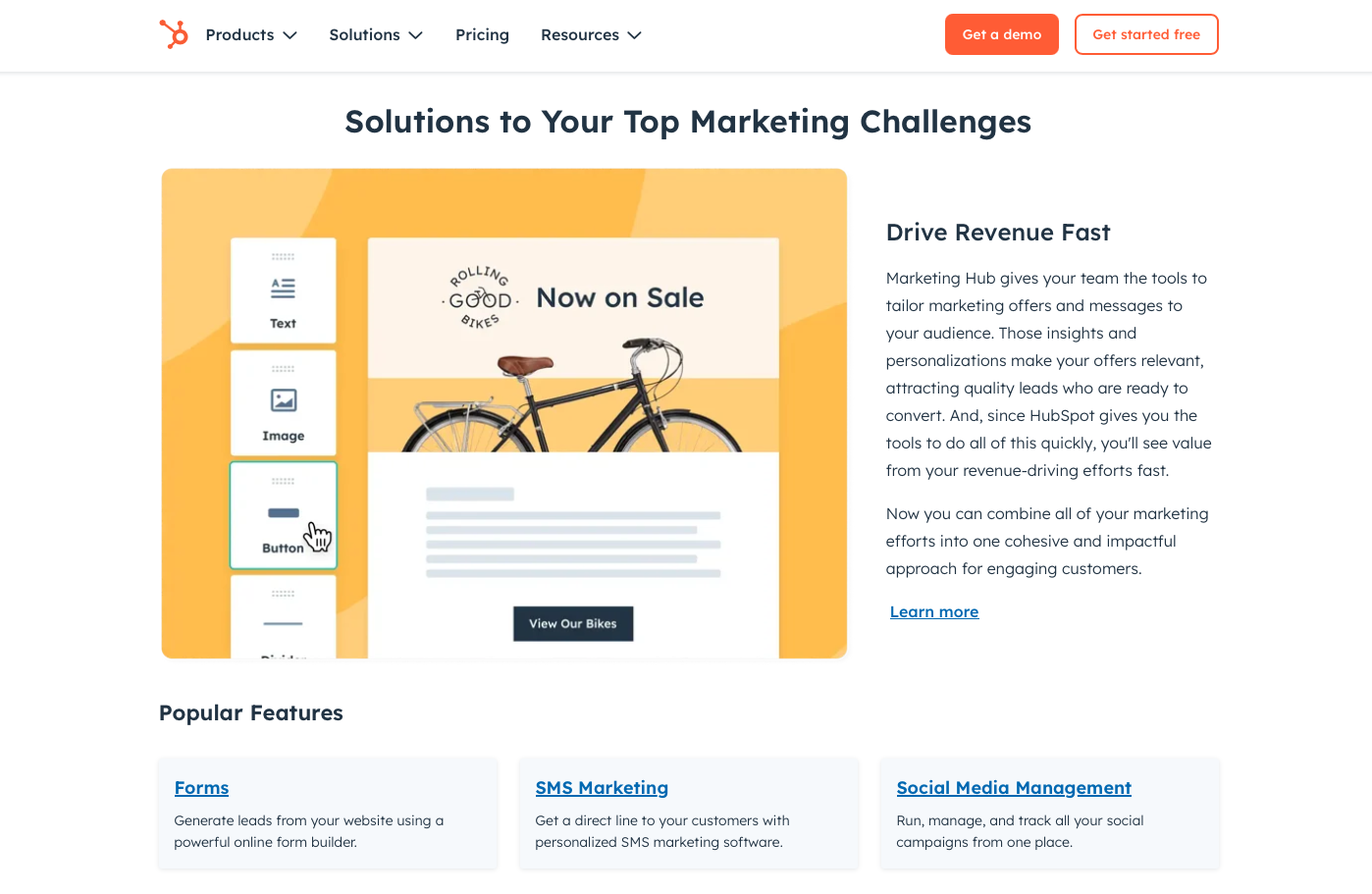
While you'll need humans to create content like valuable blog posts and social media videos, there are also marketing tasks that you can automate. This is where automated marketing tools like HubSpot come in.
Tasks like email marketing, behavioral targeting, lead prioritization, and personalized advertising can all be taken care of by automation tools. It's usually used to scale marketing efforts, however, meaning that you need to build up leads and publish good content organically first.
Then, when you want to reach more people without massively expanding your marketing team, you can use automation tools to scale your current marketing strategies.
10. Mobile marketing
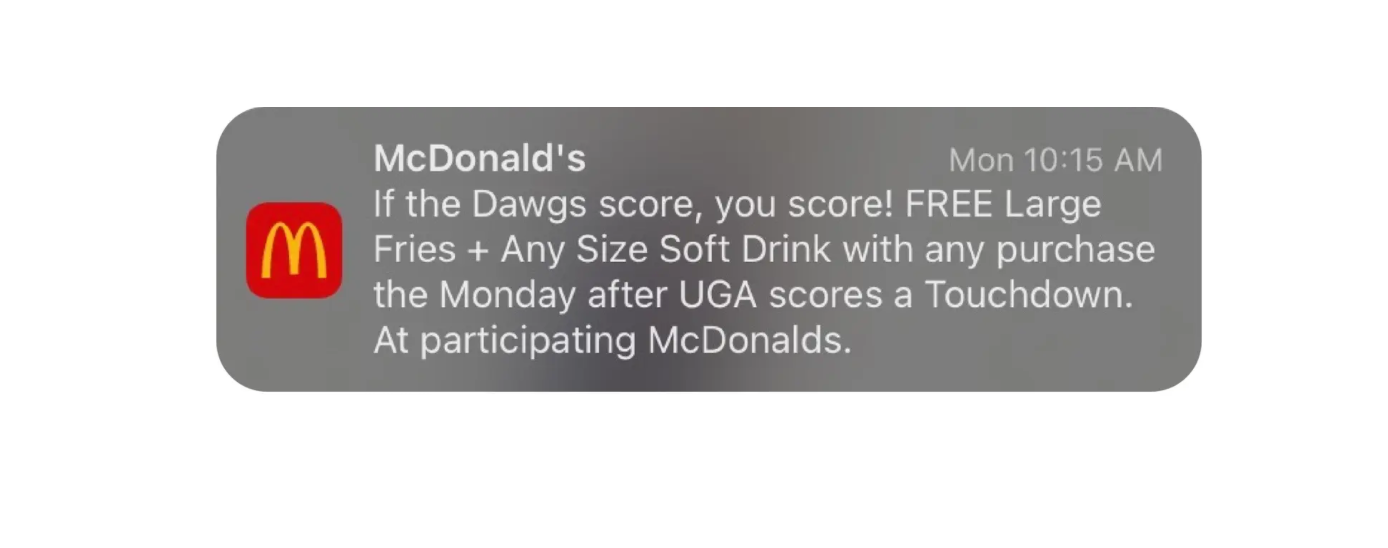
Mobile marketing is anything that's unique to smartphones—like banner ads in a mobile app, push notifications, and SMS marketing. Ecommerce brands can take advantage of mobile marketing tactics by creating a mobile app for people to use rather than visiting the site on their mobile browser.
This way, people can opt-in to push notifications in a similar way to signing up for newsletters. The advantage is that you can make notifications appear at very specific times when your audience is most likely to respond to them.
Social media apps also use push notifications, and people who follow your accounts can get notifications when you publish new content. You can also achieve something similar with SMS marketing, which is essentially like short-form email marketing.
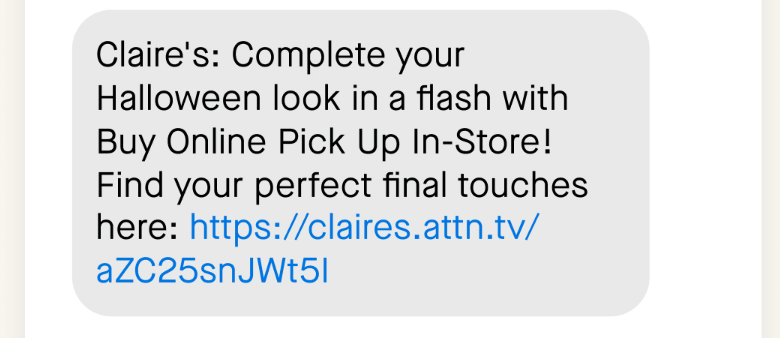
Messages are typically short and to the point, encouraging readers to engage with a company's offerings. For consumers, messages tend to come from companies they've already bought from in the past, rather than completely random brands.
Take this SMS message from accessory shop Claire's, promoting seasonal products at the right time of year and reminding customers how quick and easy it is to make a purchase.
11. Sponsored content
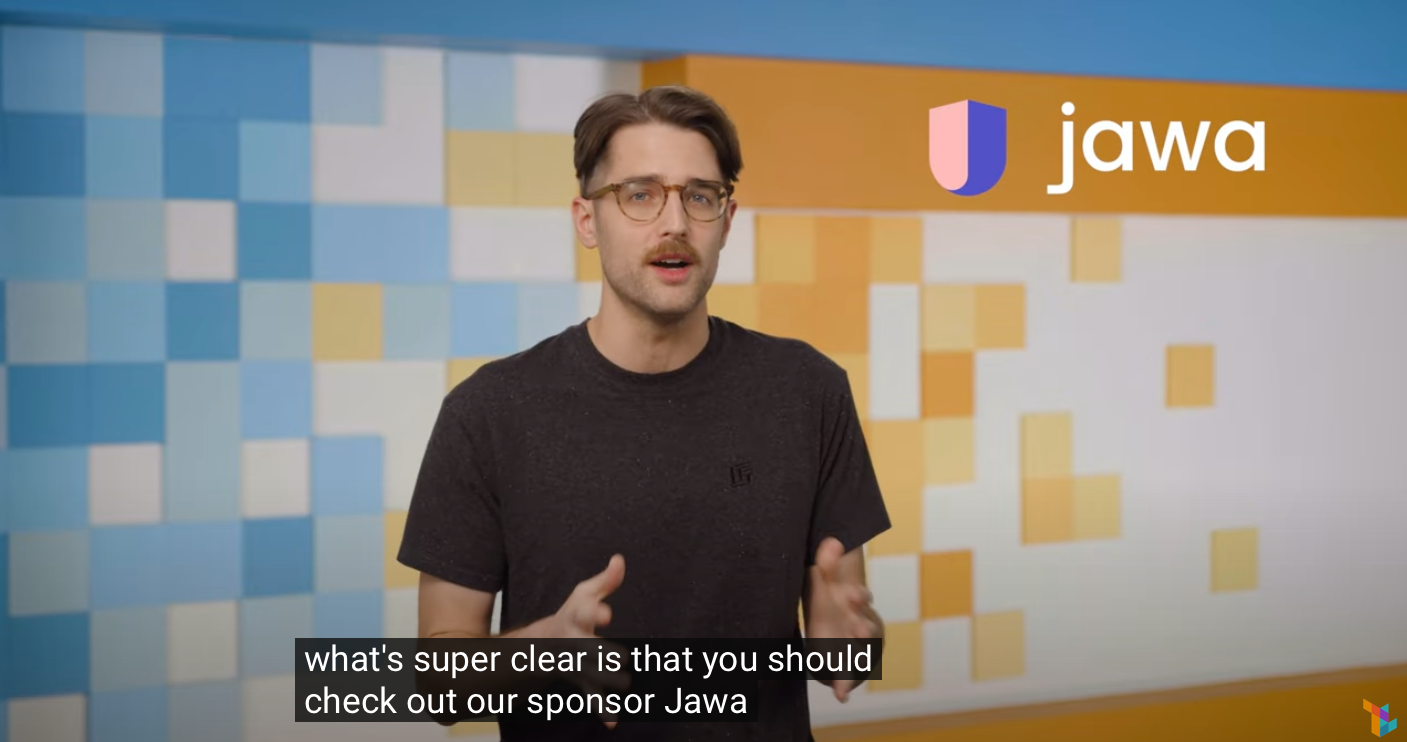
Sponsored content is a type of paid advertising but rather than paying an agency to distribute your ads, you contribute funds to help support a business and receive ad space in return.
You see this a lot in YouTube videos such as those from Linus Tech Tips, where the video is broken up by sponsored sections dedicated to brands that helped finance the video or project.
When sponsored content like this is done well, channels can fund bigger projects while also introducing their audience to high-quality products and services that they'll be interested in.
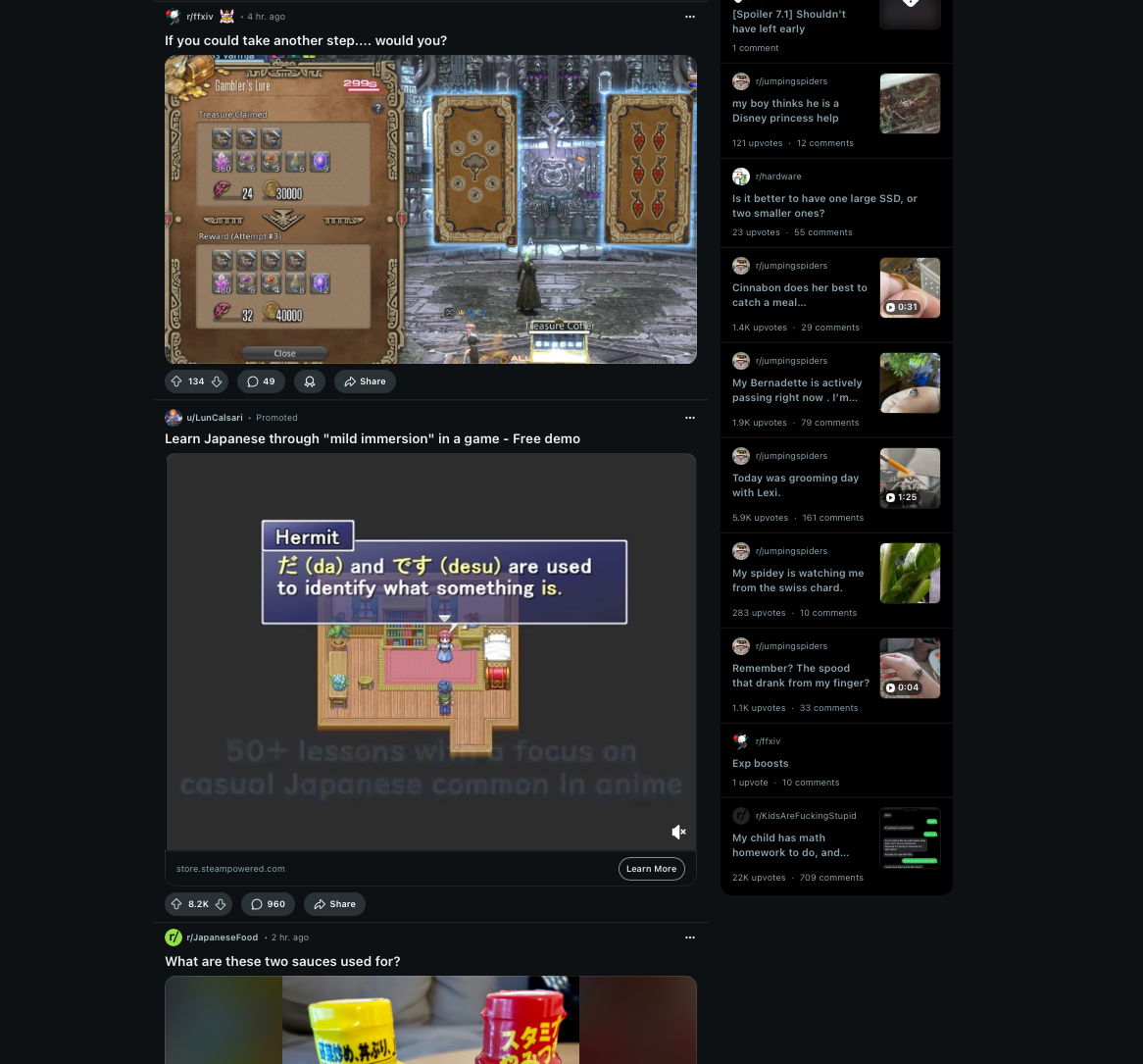
Native ads are another kind of sponsored content that you'll see all over the web, from news sites to social media platforms like Reddit. The ads take the form of the content around it, making them blend in with the rest of the page.
To differentiate them from other content, they'll usually have the word "sponsored" or "promoted" next to them.
Native ads are often preferred over banners and popups because people are much more likely to look at them, rather than avoid them on principle.
At the same time, some users do feel annoyed by them since it feels like they're being tricked into looking at them, not realizing at first glance that they're ads rather than posts.
The difference between inbound marketing vs. digital marketing
While the two often overlap, inbound marketing and digital marketing have distinct focuses. Inbound marketing is all about attracting customers through valuable content, building trust, and nurturing relationships.
It includes strategies like blogging, SEO, and email marketing designed to pull people in.
Digital marketing, on the other hand, is the umbrella term for any marketing activity done online. It encompasses everything from social media ads and pay-per-click campaigns to influencer collaborations and website analytics.
Think of digital marketing as the toolkit, and inbound marketing as one of the many tools inside. Both approaches work together to drive growth and create meaningful connections with your audience.
B2B vs. B2C digital marketing: How does it work?
Both B2B (business-to-business) and B2C (business-to-consumer) digital marketing aims to engage audiences, but the audiences they target and the strategies they use are usually different.
For B2B, the focus is usually on demonstrating expertise and solving business problems. Content like whitepapers, case studies, and webinars plays a significant role, targeting decision-makers who prioritize value and ROI. Channels like LinkedIn are especially effective for B2B outreach.
B2C marketing, on the other hand, speaks directly to consumers—or in simpler terms, to people. It often focuses on emotions, convenience, and immediate needs.
Think eye-catching Instagram campaigns, relatable TikTok posts, and personalized email offers that encourage quick action.
Many companies engage in both types of marketing if they offer both enterprise and consumer versions of their product.
Best ways to learn more about digital marketing
The best way to level up your digital marketing strategies is to learn directly from experts.
Whop is home to some of the most experienced and recognized names in the digital marketing space, so if you want to learn up-to-date techniques, the following whops should be your first stop.
1. Chase Chappel
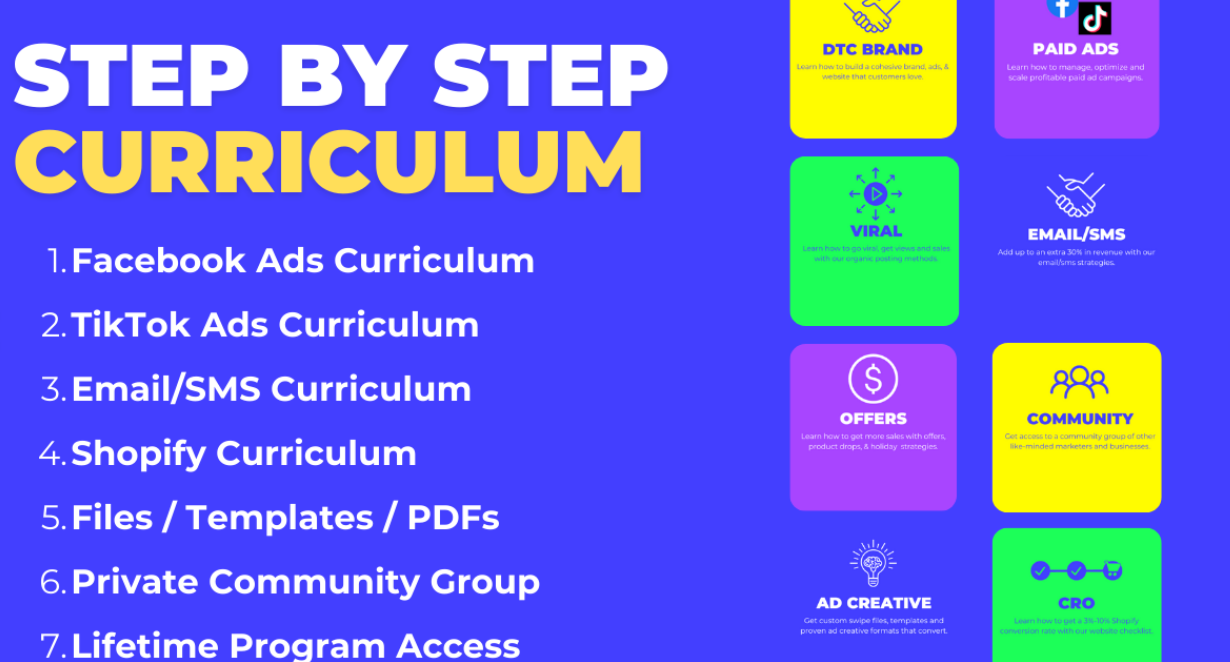
Learn how to master ecommerce marketing with Chase Chappel, with modules on Facebook Ads, TikTok Ads, Email/SMS marketing, Shopify, and viral marketing. Ads work differently on different platforms but with this course, you can learn how to optimize for each and every one.
It also includes access to a community full of other ecommerce brand owners, including experts who are bringing in seven and eight-figure salaries.
2. MediaLabs
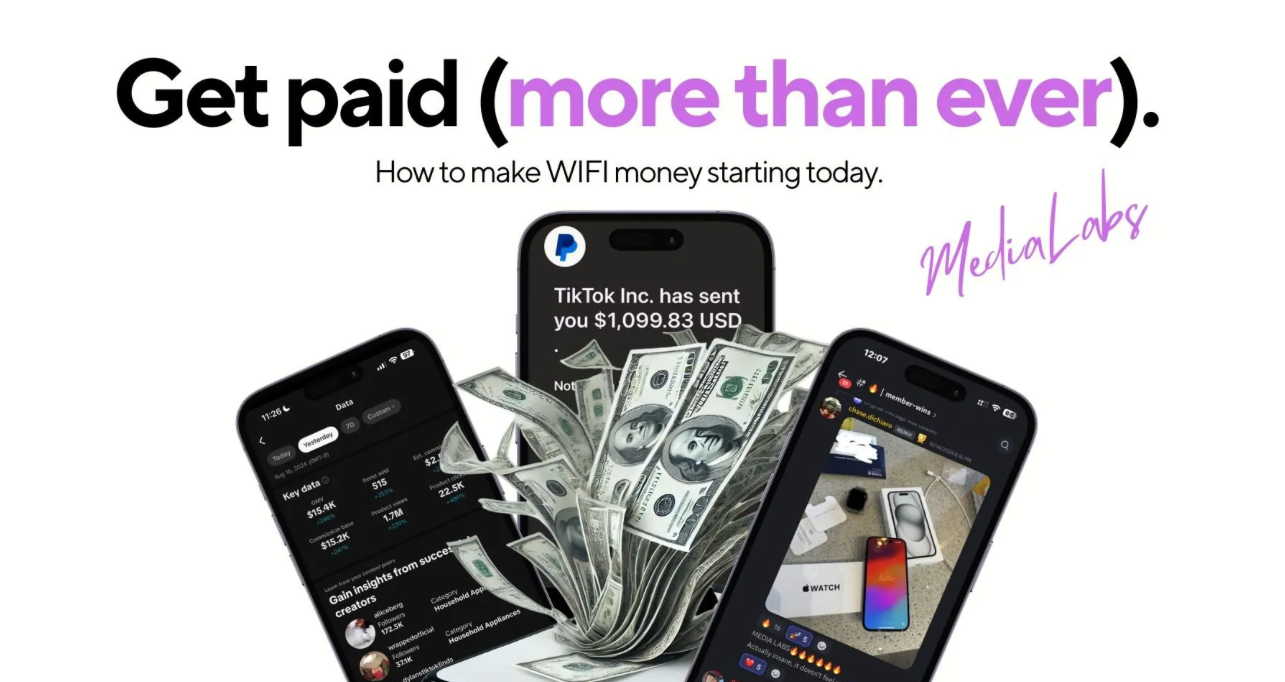
Learn all you need to know about affiliate marketing on TikTok from someone who has made millions doing it themselves. Alex has millions of followers on TikTok and can make a yearly salary's worth of money in a month—at just 22 years old.
His community includes an in-depth online course, personalized coaching, weekly calls, and access to brands you can make deals with.
3. Mailmodo
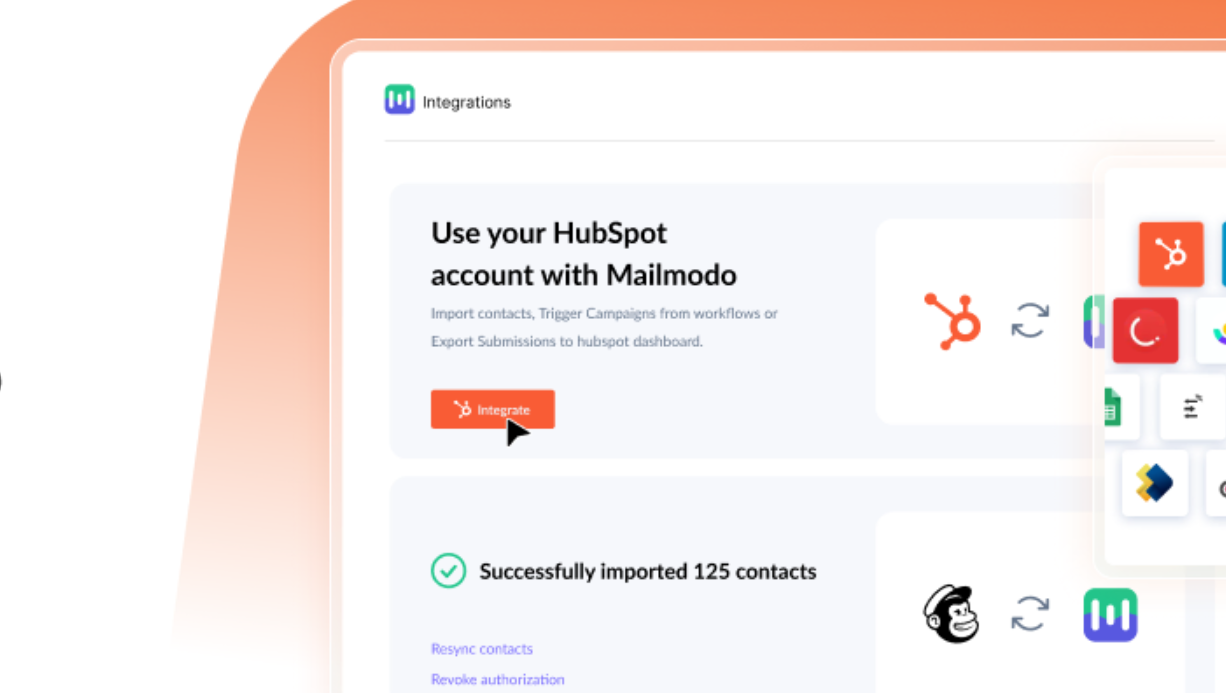
Automate your email marketing with Mailmodo, a tool that allows you to send personalized emails to your customers. It integrates with a range of different platforms, including Whop, and comes with a guide to help you set everything up.
4. Mind of Khan Studios
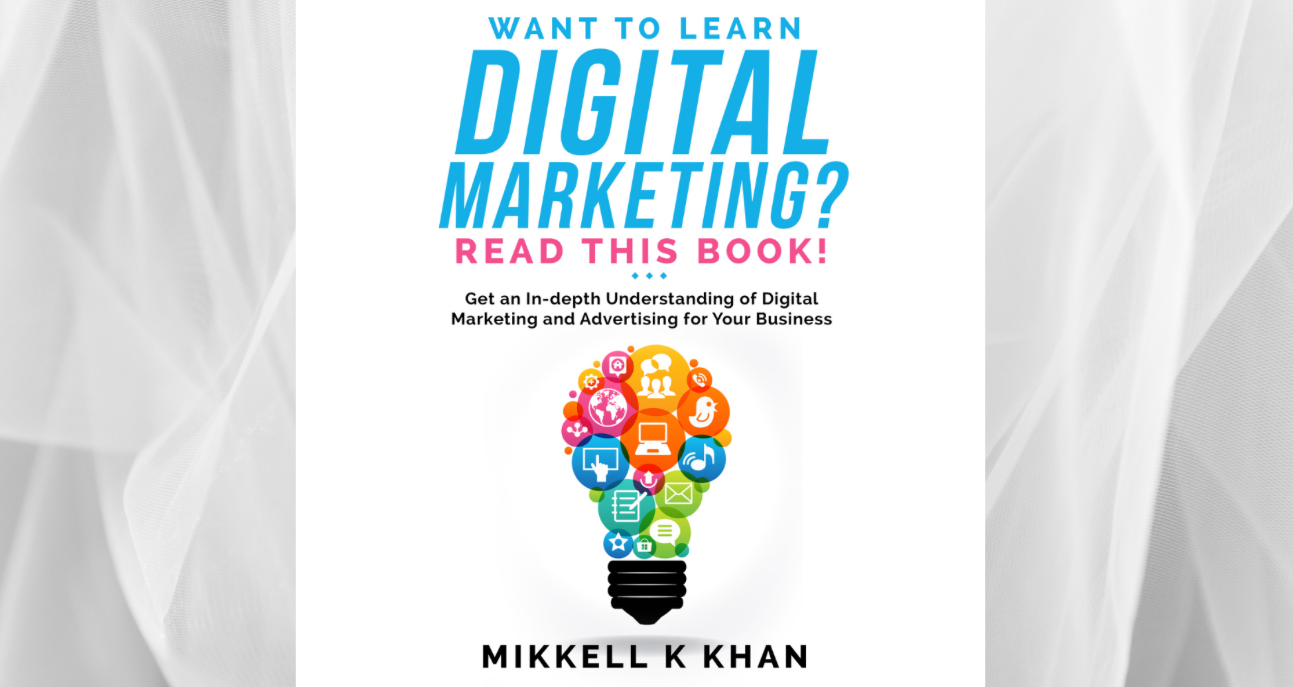
The Mind of Khan Studios is an exclusive community based around the "Want to learn digital marketing?" ebook. You can buy the book along with access to the community and also choose add-ons like online courses, consultations, and other audiobooks.
5. Lead Academy
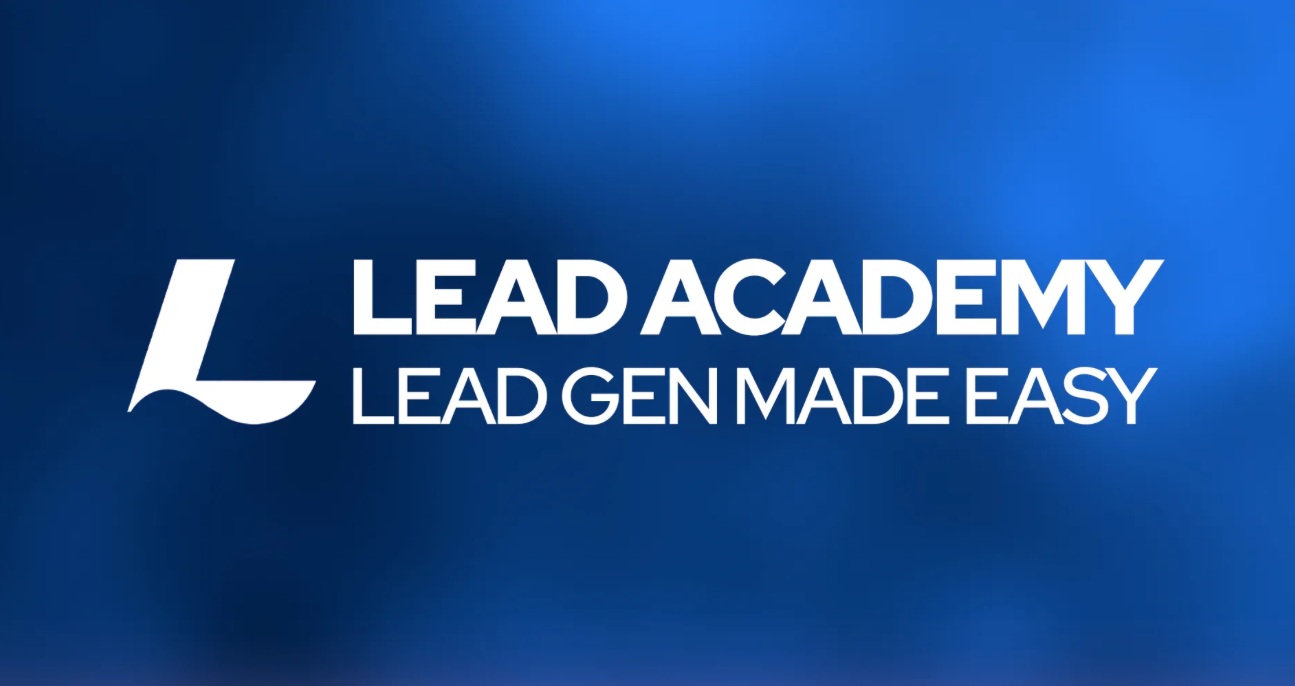
Lead Academy gives you access to an active community and a range of online courses that will teach you how to generate leads for your business. This includes topics like email marketing, B2B sales, and personal branding. Community membership also includes a weekly coaching call for all students.
6. RankMaths
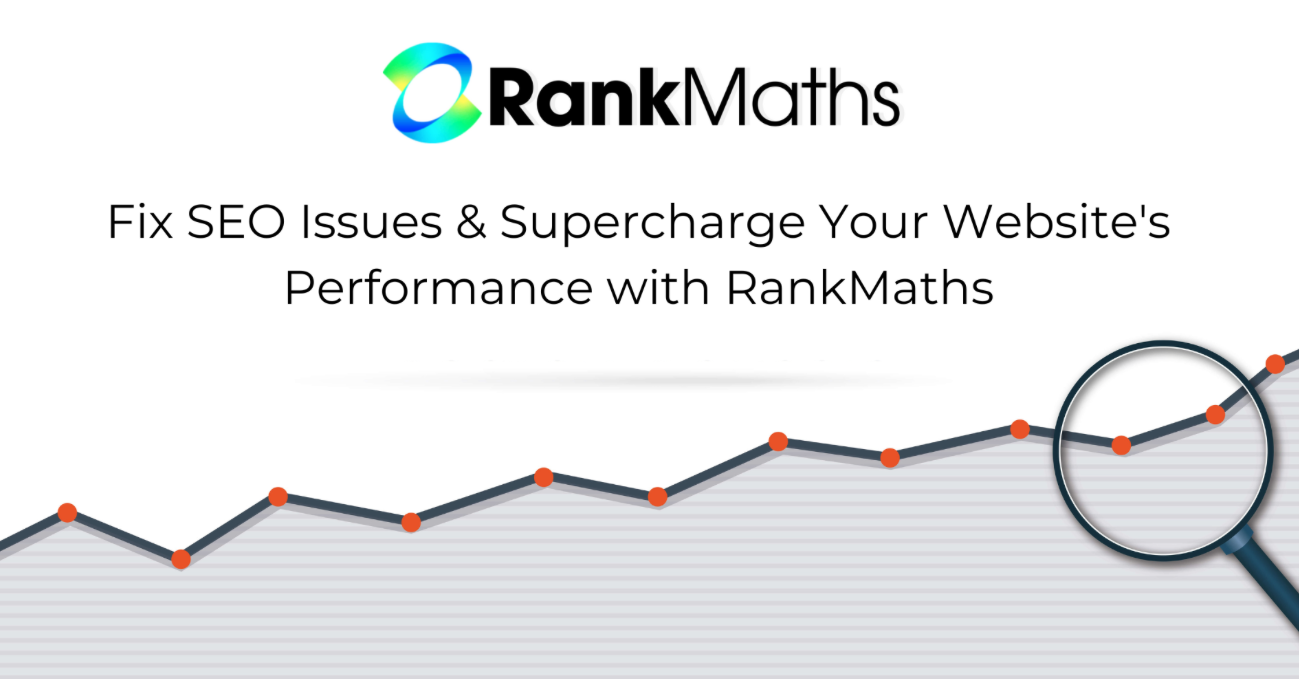
Maximize the health and performance of your website with RankMaths, a tool that runs SEO audits and presents you with detailed reports on your site's strengths and weaknesses.
When you can see exactly what's doing well and what isn't, optimizing your site becomes a lot easier. There are various plans available to allow you to try out the tool and scale it along with your business.
7. The SEO Boardroom
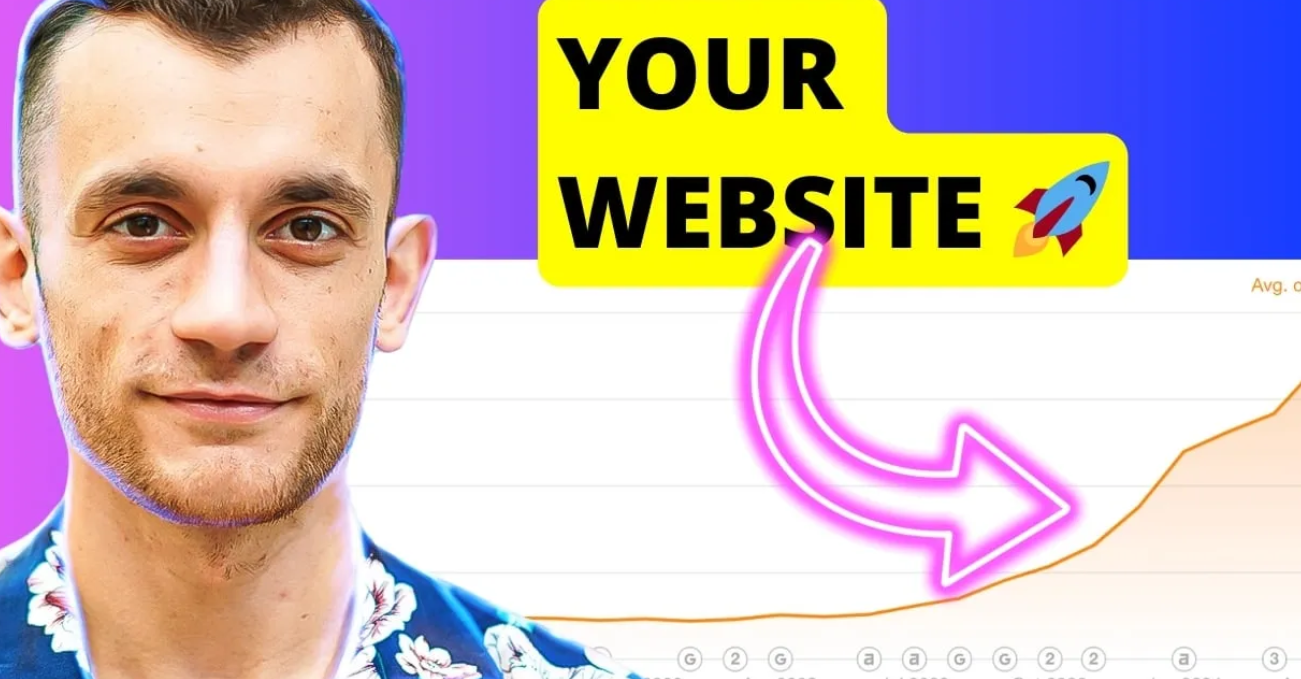
If you want to learn what SEO is, why it's important, and how you can use it to help your business grow—the SEO Boardroom is the place for you. You'll get access to online courses, an online community, 24/7 support, networking opportunities, and more.
8. AM ELITES
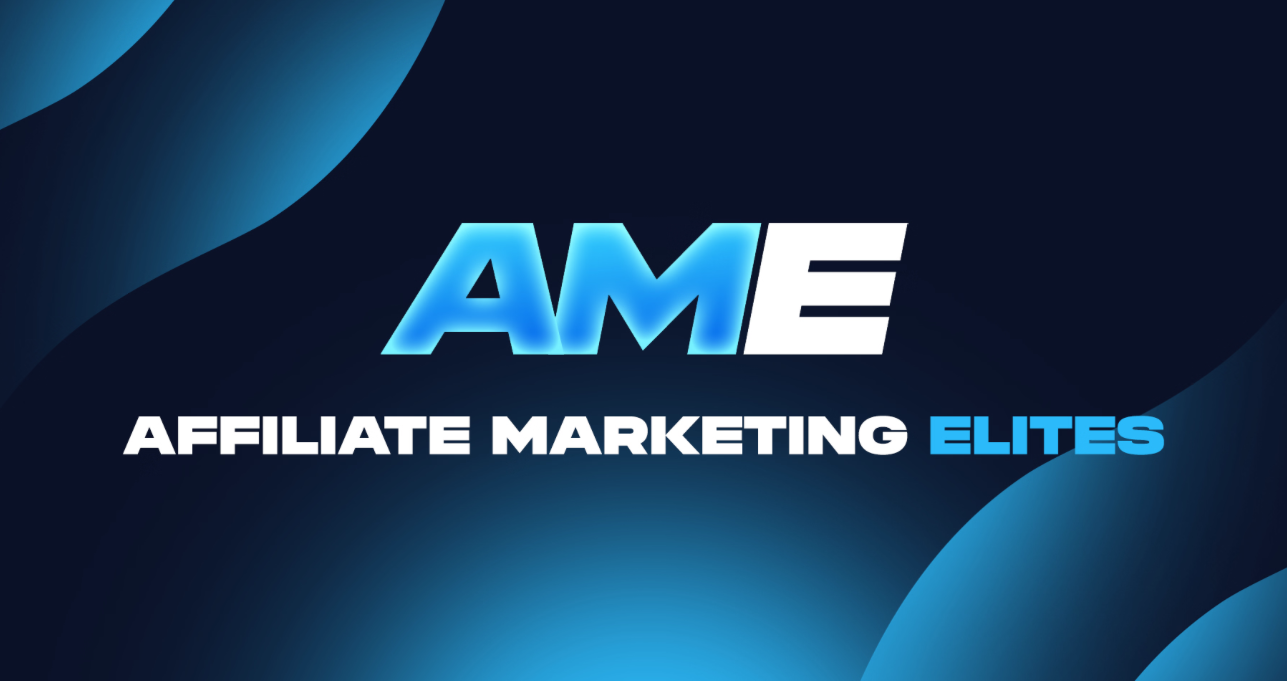
Learn how to get into affiliate marketing across a range of platforms with the online course from AME. Along with the course, you'll also get access to a network of over 500 other marketers and 24/7 support.
Why digital marketing is worth it
I hope that our deep dive into digital marketing showed you just why it's such a good thing to explore, but let me summarize it for you to help bring the point home.
For starters, digital marketing isn't just for big brands.
Sure, all the big-name companies do it, from Apple to McDonald's, but that doesn't mean that it's just reserved for the pros. In fact, any person trying to make money online can and will benefit from using some digital marketing strategies.
The best things about digital marketing are all to do with the fact that the internet and the media are both a vast, vast place. Standing out is crucial in running a successful business, and with the number of people likely offering something similar, it's a constant battle to be seen.
Compared to traditional, non-digital marketing methods, this type of advertising has lots of benefits, such as:
- It's cost-effective
- You can measure the results
- It gives good ROI
- It helps you interact with your customers
- It improves conversion rates
- You can generate more leads
- Social media gives you a chance to go viral
- It makes professional-level marketing possible for smaller business
Whether you start out small with some social media content or go all-in with a paid marketing campaign, it's important to start implementing these strategies from the get-go.
That's why it's such a good idea to learn from people who do this for a living and who know what's what.
Read this guide if you want to start your own digital marketing agency.
Learn from experts and master digital marketing with Whop
Learn digital marketing from experts who have been actually making money doing it. Whop's communities and courses are run by proven creators, some breaking hundreds of thousands of dollars per month.
Each whop includes places like courses, coaching calls, chat rooms, downloadables, and more where you can learn how you too can become a successful digital marketer.
There's no better way to stay up to date, learn more, and receive personalized digital marketing tips that will help you grow your business than joining the top whops in the marketplace.

